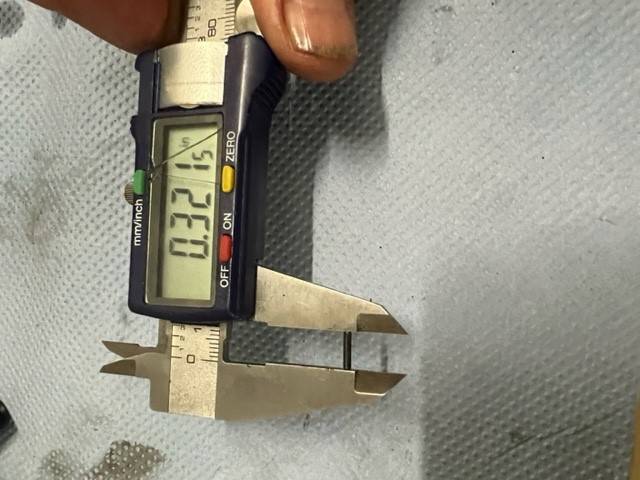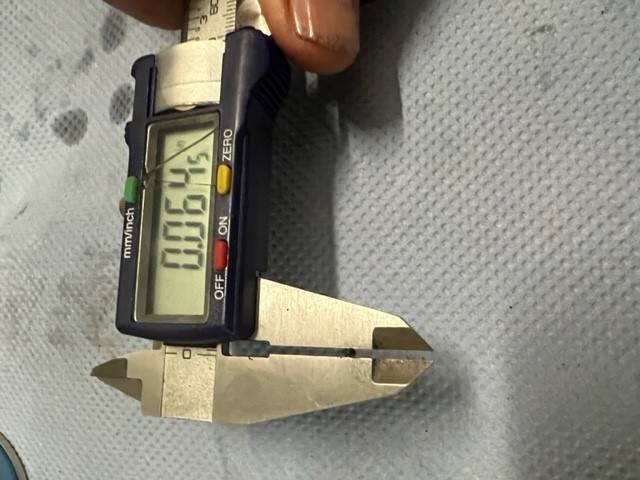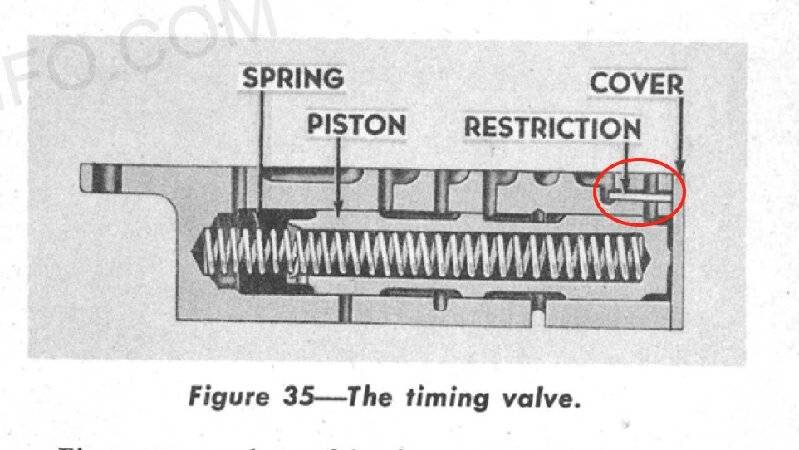|
Re: Ultramatic gearbox
|
||||
|---|---|---|---|---|
|
Home away from home
|
If you could post or attach links to pictures of the suspect parts then we could probably tell you
Posted on: 2023/4/15 17:06
|
|||
|
1955 400 | Registry | Project Blog
1955 Clipper Deluxe | Registry | Project Blog 1955 Clipper Super Panama | Registry Email (Parts/service inquiries only, please. Post all questions on the forum.) service@ultramatic.info |
||||
|
||||
|
Re: Ultramatic gearbox
|
||||
|---|---|---|---|---|
|
Forum Ambassador
|
George,
You're in Austria yet the gearbox was "repaired" in Venezuela? Must be a good story in there about your acquisition of the car. 
Posted on: 2023/4/15 17:35
|
|||
|
Mal
/o[]o\ ====  Bowral, Southern Highlands of NSW, Australia "Out of chaos comes order" - Nietzsche. 1938 Eight Touring Sedan - SOLD 1941 One-Twenty Club Coupe - SOLD 1948 Super Eight Limo, chassis RHD - SOLD 1950 Eight Touring Sedan - SOLD What's this?  Put your Packard in the Packard Vehicle Registry! Here's how! Any questions - PM or email me at ozstatman@gmail.com |
||||
|
||||
|
Re: Ultramatic gearbox
|
||||
|---|---|---|---|---|
|
Forum Ambassador
|
As far as I know, there is no detailed breakdown of the valve body for the 51-4 original Ultramatics other than what you found in the parts manual and a bit on page 12 in the Ultramatic section of the 51-4 service manual. The first time Packard made a decent complete valve body detail available was for the late 54 Gear Starts and 55-6 Twin Ultramatics.
You might also see if the early version of the Serviceman's Training manual can help. When describing how the valves operate in part III detailing the hydraulic section, there are some very detailed cross sectional views of the various valves but nothing really showing how or where they fit in the valve body. Note that both manuals show early version transmissions. Yours may not be exactly the same if some of the field modifications and changes were made. If you check thru the service index and concentrate on the 51-52 years and to some extent the 53s when looking at some of the Ultramatic service bulletins, you will find where they changed one valve shown in the manuals from a cylinder type to a pair of spring disc like affairs and completely eliminated another valve that was in the case. There was also a significant redesign of the converter for 52 and I believe that was interchangeable so your trans could also have the later converter. You might also go to YouTube and search for Speedwell Garage to look at some of the Ultramatic rebuilding videos made by Ross Miller.
Posted on: 2023/4/15 17:40
|
|||
|
Howard
|
||||
|
||||
|
Re: Ultramatic gearbox
|
||||
|---|---|---|---|---|
|
Home away from home
|
I believe the document may be SC-VOL26N04. Page 3: Pump Check Valve Noise.
Posted on: 2023/4/15 18:47
|
|||
|
||||
|
Re: Ultramatic gearbox
|
||||
|---|---|---|---|---|
|
Just popping in

|
Please excuse my late reply, you guys helped me a lot with your info.
I assembled the control unit yesterday. While cleaning the workbench I found a very small dowel pin with a length of 0.320" and a diameter of 0.064". Can this be from the control unit of the Ultramatic? If so from where exactly? Thanks again for your help! Georg Buchner Attach file:  dowel pin length.jpg (41.21 KB) dowel pin length.jpg (41.21 KB)  dowel pin diameter.jpg (40.13 KB) dowel pin diameter.jpg (40.13 KB)
Posted on: 2023/7/30 15:07
|
|||
|
||||
|
Re: Ultramatic gearbox
|
||||
|---|---|---|---|---|
|
Forum Ambassador
|
I don't know for sure but it might be the timing valve restriction pin that helps control a manual low - high shift. You might check the timing valve and space referenced to see if there is already a pin in the location shown.
They did use stop pins to keep a valve restricted in a bore but that pin looks too short for that purpose. Don't see any other pins used as restrictions but also don't remember enough about the valve body in original Ultras to say if Packard used a similar restriction method in other places.
Posted on: 2023/7/30 15:33
|
|||
|
Howard
|
||||
|
||||
|
Re: Ultramatic gearbox
|
||||
|---|---|---|---|---|
|
Home away from home
|
Yes, that is the timing valve restriction pin. All of the other pins have flute to retain them in the casting.
Having that pin tells me that you have a late valve body in your car, which is a good thing.
Posted on: 2023/7/30 19:42
|
|||
|
||||
|
Re: Ultramatic gearbox
|
||||
|---|---|---|---|---|
|
Just popping in

|
Hello HH56,
you were perfectly correct, it is this pin by the timing valve. What do you mean by "that helps control a manual low-high shift"? Is it possible with this gearbox to switch between low and high while driving? As far as I know this is not possible with the normal Ultramatic and damages the gearbox? Hi Ross, thanks for your info too. What are the advantages of the late valve body, what are the good things? Thanks for all your help. George
Posted on: 2023/8/22 15:46
|
|||
|
||||
|
Re: Ultramatic gearbox
|
||||
|---|---|---|---|---|
|
Forum Ambassador
|
Packard designed the Ultramatic for ultimate smoothness and not for fast performance. They felt that with the torque converter and by staying in a single gear the trans could still provide decent performance but would not have any of the jerkiness exhibited by other transmissions. Many of the other early automatic transmissions had an ordinary fluid coupling and those do not multiply torque so need to have some kind of shift. Packard even had an advertisement showing their nice smooth comfortable ride compared to lurches bouncing passengers as the other car went thru shifts.
It turned out a car with one of those other units might be halfway down the block before the Packard had barely cleared the intersection. Unfortunately, because the Ultramatic is not fast off the line when in high gear in order to try and keep up with the other cars a manual shift was something too many drivers relied on. Drivers would put the car in low, pull away and then slip the gearshift lever to high keeping their foot on the gas. There is no synchronization between the gears to speak of in the orignal Ultras so when the lever moved out of low and into high the low bands might release fairly quickly and the engine raced because there was suddenly no load. The high range clutch plates can take time to engage so with the engine racing, when they finally had decent lockup pressure they were already spinning and sliding against one another before they could fully lock together. The task of trying to pull the engine speed back down using only the high range clutch caused the plates to overheat and burn. Worse yet was situations when low range was slow to release but high might be a bit faster. When that happened low and high would both try to be engaged at the same time putting tremendous strain on pieces inside the trans. As more cars came with automatics Packard soon realized they were at a competitive disadvantage so tried to improve the situation. They revised the valves and made changes to passages in the timing circuit to improve the situation which is part of the later valve body. Even went to the point of releasing a timing kit to retrofit to older units in trying to improve the situation but that approach was never completed to a fully successful degree. All that work did lead to the late 54 introduction of the Gear start which was the precursor to the 55-6 Twin Ultramatics and was a viable solution to have a more competitive transmission. Unfortunately there were almost no changes to the mechanical parts inside the unit that carried power. A revised transmission designed for a low HP low torque straight eight got very little testing before suddenly being placed behind a high torque high horsepower V8 in 1955. Teething problems with the hydraulics for the new shift pattern, components that might be a bit small for the power they were expected to carry and the lack of testing soon came to light and what was considered a decent and reliable transmission quickly got a poor reputation. Most of the problems were fixed by 56 but Packard was out of time. While the low to high manual shift is not something Packard recommended it can be done much more safely by letting off the gas when moving out of low and not stepping on it again until the car is completely in high. Granted that defeats the purpose of trying to get faster acceleration but at least there is less of a chance the transmission will leave you or some of its parts sitting in the road.
Posted on: 2023/8/22 16:44
|
|||
|
Howard
|
||||
|
||||

 Plate No 144 Ultramatic 24th 25th Series.pdf
Plate No 144 Ultramatic 24th 25th Series.pdf







